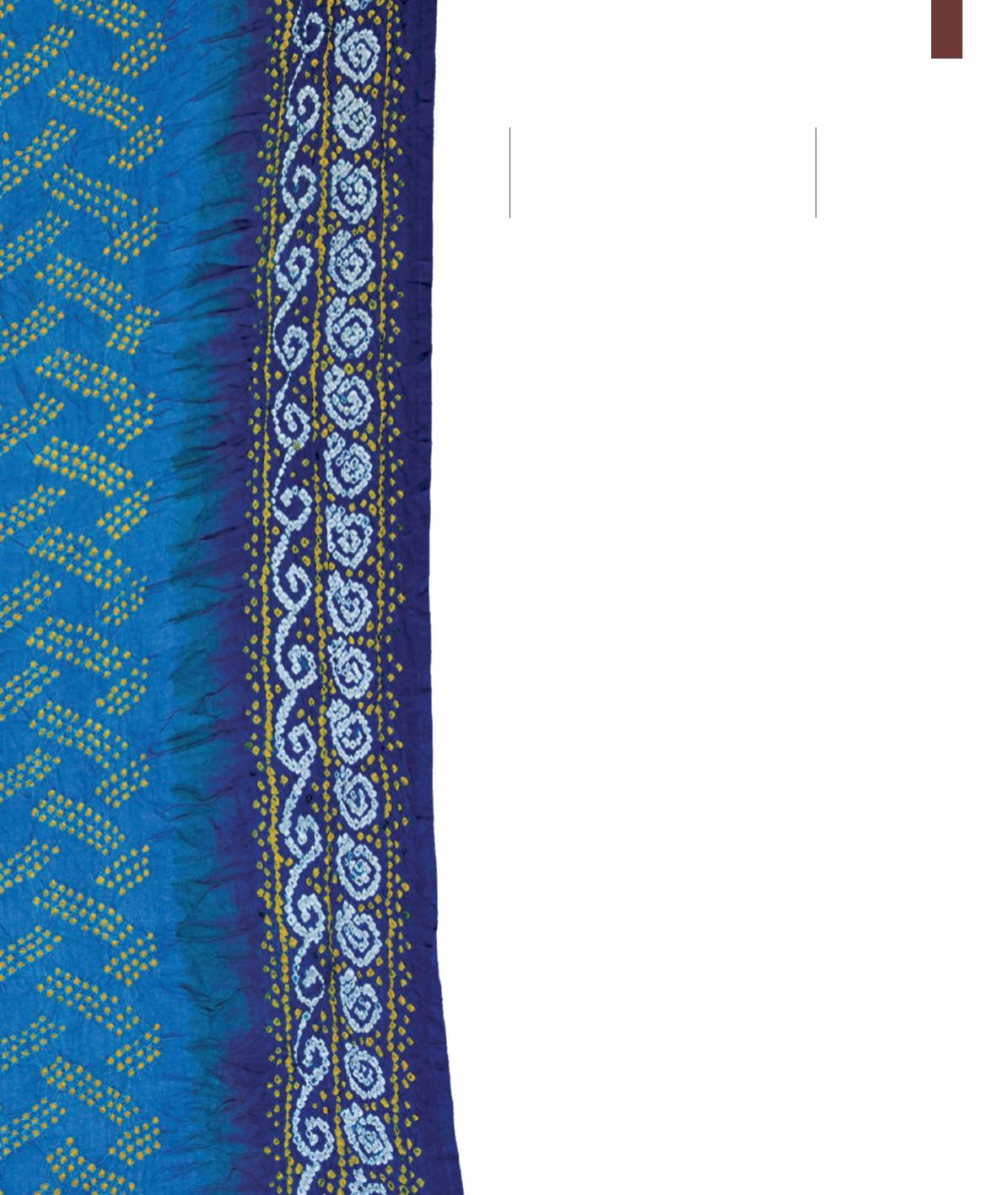
79
women of the Khatri community; Shikari for
women of the Memon community; the Khobhi
for women of the Kumbhar community; and
the Garchola for women of the Jain and Hindu
communities.
Our work is distinguished by the fineness and
minuteness of dots, as well as the elaborate
patterns created by thousands of dots. We are
able to create such textiles due to our skill and
also because we pay artisans who work with us
according to the number of dots they create on
a textile and not just a flat rate for a textile. This
encourages them to create many dots, and this
can only be accomplished on a given textile if
the dots are minute. Depending on the pattern,
the tie-dye of a single textile or garment could
take from a few days to two months.
Spreading the Knowledge
Our father always wanted the knowledge,
practice and awareness of our craft to
spread far and wide. He always said that only
when more people know about the art and
understand the effort involved in it, will they
appreciate it, buy it, and thus its value will go up
and artisans will also earn more.
It is for this reason that he started training
people in the craft. He specially focused on
training women in the art of tying fine knots.
He felt that if women learnt the art, then they
could work from home in their free time after
they have completed their household duties.
Unlike dyeing that requires many processes,
space and a water source, tying knots only
requires the cloth and yarn. It can easily be
practised by women from home once they are
taught the technique. My father said the craft
of tying knots would bring women income
Our work is distinguished by the
fineness and minuteness of dots,
as well as the elaborate patterns
created by thousands of dots.


